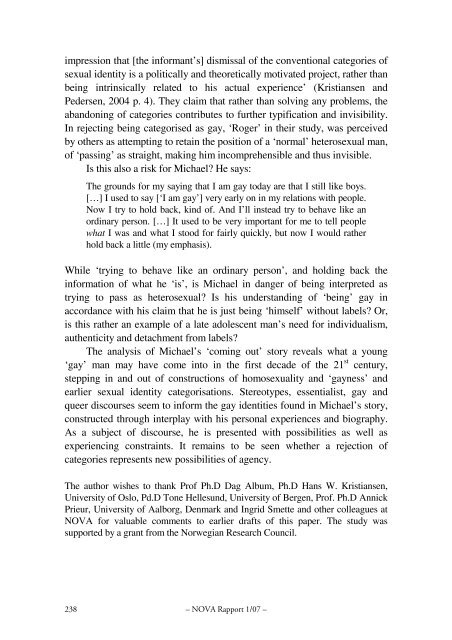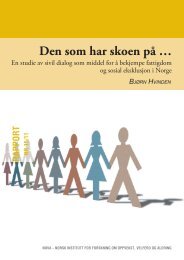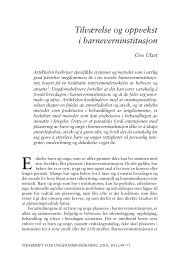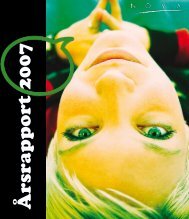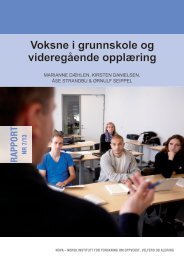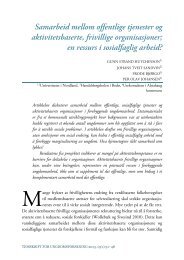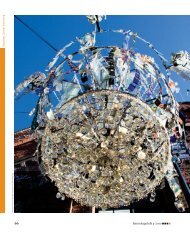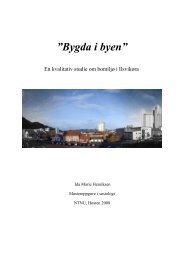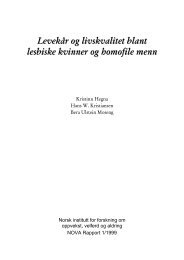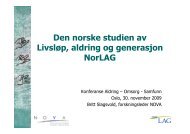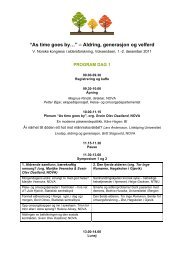Betydningen av seksuell erfaring, tiltrekning og identitet for ...
Betydningen av seksuell erfaring, tiltrekning og identitet for ...
Betydningen av seksuell erfaring, tiltrekning og identitet for ...
Create successful ePaper yourself
Turn your PDF publications into a flip-book with our unique Google optimized e-Paper software.
impression that [the in<strong>for</strong>mant’s] dismissal of the conventional categories of<br />
sexual identity is a politically and theoretically motivated project, rather than<br />
being intrinsically related to his actual experience’ (Kristiansen and<br />
Pedersen, 2004 p. 4). They claim that rather than solving any problems, the<br />
abandoning of categories contributes to further typification and invisibility.<br />
In rejecting being categorised as gay, ‘R<strong>og</strong>er’ in their study, was perceived<br />
by others as attempting to retain the position of a ‘normal’ heterosexual man,<br />
of ‘passing’ as straight, making him incomprehensible and thus invisible.<br />
Is this also a risk <strong>for</strong> Michael? He says:<br />
238<br />
The grounds <strong>for</strong> my saying that I am gay today are that I still like boys.<br />
[…] I used to say [‘I am gay’] very early on in my relations with people.<br />
Now I try to hold back, kind of. And I’ll instead try to beh<strong>av</strong>e like an<br />
ordinary person. […] It used to be very important <strong>for</strong> me to tell people<br />
what I was and what I stood <strong>for</strong> fairly quickly, but now I would rather<br />
hold back a little (my emphasis).<br />
While ‘trying to beh<strong>av</strong>e like an ordinary person’, and holding back the<br />
in<strong>for</strong>mation of what he ‘is’, is Michael in danger of being interpreted as<br />
trying to pass as heterosexual? Is his understanding of ‘being’ gay in<br />
accordance with his claim that he is just being ‘himself’ without labels? Or,<br />
is this rather an example of a late adolescent man’s need <strong>for</strong> individualism,<br />
authenticity and detachment from labels?<br />
The analysis of Michael’s ‘coming out’ story reveals what a young<br />
‘gay’ man may h<strong>av</strong>e come into in the first decade of the 21 st century,<br />
stepping in and out of constructions of homosexuality and ‘gayness’ and<br />
earlier sexual identity categorisations. Stereotypes, essentialist, gay and<br />
queer discourses seem to in<strong>for</strong>m the gay identities found in Michael’s story,<br />
constructed through interplay with his personal experiences and bi<strong>og</strong>raphy.<br />
As a subject of discourse, he is presented with possibilities as well as<br />
experiencing constraints. It remains to be seen whether a rejection of<br />
categories represents new possibilities of agency.<br />
The author wishes to thank Prof Ph.D Dag Album, Ph.D Hans W. Kristiansen,<br />
University of Oslo, Pd.D Tone Hellesund, University of Bergen, Prof. Ph.D Annick<br />
Prieur, University of Aalborg, Denmark and Ingrid Smette and other colleagues at<br />
NOVA <strong>for</strong> valuable comments to earlier drafts of this paper. The study was<br />
supported by a grant from the Norwegian Research Council.<br />
– NOVA Rapport 1/07 –


